
Storms, those whirlwinds and symphonies in the sky,
nourish my midnight soul
and comfort my Gur spirit.
Those tempests amplify
the starlight in my eyes,
the moonbeams in my veins.
There is something in the Moon that sets the Gur blood astir:
We must rise and follow Her,
When from every hill of flame She calls,
and calls each vagabond by name.
Until we will pass away;
Laid one by one below the village steeple
You face the Moon from which your fathers sprang,
Or sleep in moorland turf, beyond the clag
Of towns and fairs; your tribes have joined the people
Whom no true Gur will call by name,
The folk departed like the campfire flame
Of withered yesterday.
Foreword
This page serves as a source of information for players to leverage should they wish to be reasonably knowledgeable of the Gur, but also to offer players access to information needed for playing a Gur native to Amn, or ones belonging to faraway lands. To clarify, players are allowed to play characters from any of the tribes mentioned here, exiled members of a tribe, or custom ones of their own making so long as they retain enough biological and cultural traits as well as history from this page to still effectively be Gur.
If in doubt regarding your own custom tribe’s creation and details therein, please contact the DMs.
Note: Playing a direct descendant of a prominent figure (i.e. any of the leadership) of official tribes is not permitted - this is to avoid any one player having an unfair leg up from the get-go should any tribe’s NPCs ever come into play in our playable region or otherwise. Similarly, any player made tribe must be small in scope and size. Again, if in doubt, please contact the DMs on the Discord.
Additionally, you are allowed to change only one major physical feature, either the hair or eye colour of your character to account for diluted lineage. Skin complexion must remain a shade of dark matching Rashemi appearance. All Gur must be pure humans, half-elf and half-orc Gur do not exist.
Common History of Gur
The Gur, also known as “Selûne’s Children” or “the People of the Highway,” are a nomadic people of old. Most Gur are members of extended family groups - known as tribes - that traditionally travel together in motley caravans, making their living through mingling with other peoples and their settlements, or simply by living in harmony with nature, well away from what they perceive to be the unwelcome encroachment of civilisation. Others have settled in the poorest quarters of cities such as Baldur’s Gate, Elturel, and Irieabor, where they struggle to survive in the face of ancient prejudices, forced to steal, beg, and take. Some Gur yet defy discrimination, making themselves known for contribution in farmlands during their migrations, helping during the harvest season and bartering, proving themselves exquisite tinkerers and jack-of-all-trades people.
Among those few scholars who have studied their culture, the Gur are thought to be primarily of Rashemi descent. Although some of their number have certainly intermingled with members of other ethnic groups and taken on minor differing physical traits, they strongly resemble the natives of Rashemen - with thick black hair, dark eyes, and dusky skin.
As fragments of lore dating back to the erection of the Standing Stone refer to the nomadic Gur, it is thought that they fled their ancient homeland during or immediately after the cataclysmic battle between Raumathar and Narfell, but other tablets of ancient lore contradict this by referring to a largely unknown event of old known as the First Sorrow, where supposedly a division of some manner took place among their own people, allegedly leading to the first exodus from many corners of the world that spread their people across the Realms.
Gur Naming Conventions
Gur naming conventions are - to a degree - influenced by the ancestral land of their tribe, and sometimes even by other regions, due to centuries of intermingling and dilution of bloodlines through marriage to other Gur tribes, and at times even with outsiders. The Lovari tribe of Amn, for example, tend to have names at least somewhat mirroring Amnian naming conventions.
All Gur take on a second name that speaks to their apparent destiny or purpose in life, or sometimes simply their personality, if this is particularly notable or meaningful. This is typically earned early on in life, as a mere child, a young teen, or at times through the tribe’s Maladyilem (coming of age journey). The exact name is traditionally decided upon by the leaders of a tribe. In some extreme cases Gur even take on nothing but their second name, abandoning their first utterly, or being given only a name of this ilk upon their naming.
The surname is the same as the tribe’s name, but unlike first names, this remains untouched by time and outside influence among all tribes.
Western Heartlands Gur tend to be named similar to Rashemi names. They include the likes of: Boriv, Gardar, Madevik, and Vlad for men; Varra, Ulmarra, Imza, Navarra, and Yuldra for women; and Chergoba, Drazlad, Tazyara, Vargoba, and Stayankina as surnames.
Second (earned) names are done as follows:
Silver-in-Heart
Wolf-in-Slumber
Cloud-on-Mind
Steps-to-Silence
Wanders-with-Wind
Walks-in-Fever
Sleeps-in-Blue
Wakes-in-Roses
Sees-in-Silver
Crescent-of-Bone
Moon-in-Blood
Full names would then be:
Gardar "Hope-Before-Violence" X (X being tribe name),
Ulmarra "Salt-of-Earth" X (X being tribe name),
Navarra "Courage-in-Heart" X (X being tribe name),
This is only a handful of examples, players are welcome to create their own. Introducing oneself, whether to outsiders or cousin Gur, would be done as follows:
“I am Varra "Crescent-of-Bone" of the Tazyara tribe.”
Or,
"I am Varra "Crescent-of-Bone" Tazyara."
Gur Culture
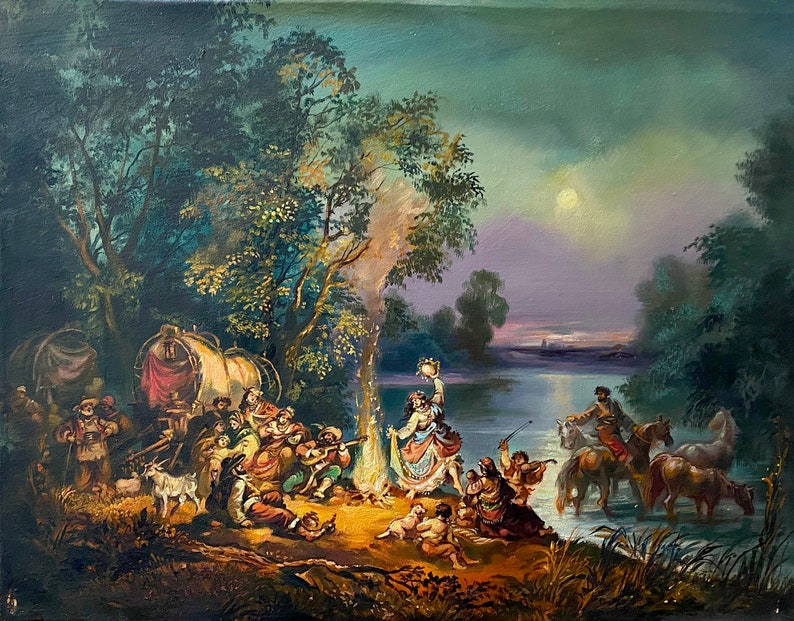
Overview
Gur culture somewhat varies from tribe to tribe, some more heavily than others, but all share at least a semblance of common ground and mutual culture - even if the interpretation of some things may differ greatly. Although exceptions exist, Gur strictly adhere to the traditional roles and ways of their specific tribe. This doesn’t mean that they’re chiefly Lawful in disposition, but simply that they all assign great importance to maintaining Gur tradition and life, to the extent that even a Chaotic Gur would adhere to this Lawful trait, in the same vein that elves are extremely traditional in spite of their predominantly Chaotic alignment.
The most important part of Gur life is Guriya, the law which governs over the lives of most Gur from beginning to end. Guriya is customary and oral, taught from father to son, mother to daughter, passed on century after century, and enforced harshly at all times.
The vast majority of Gur law revolves around the belief that the world is separated into what is clean (vujo) and what is dirty (marime). Being marime - or coming into contact with anything marime - can cause a wide range of conditions including bad luck, sickness, disease and death, all of which is typically referred to as curses.
Under Guriya (Gur law), theft, fraud, contractual default, or meritless violence - especially toward a Gur of the same tribe as kin is everything to them - is polluting and impure. These socially uncooperative behaviours are subject to the same taboos as the latter behaviours: one mustn’t engage in them. If a Gur does, they become marime, and once one is deemed and branded as such, redemption is extremely difficult to attain, and may in fact never be achieved.
A person or object may be dirty, what Gur call melyardo, without being marime. This essentially means that there is hope for purity, for vujo, that a person or object may yet be redeemed and purified. All things deigned marime typically are perceived as permanently morally “soiled,” but not necessarily physically so.
The natural world is typically seen as vujo by all Gur, but exceptions exist wherein certain parts of it - particularly lands corrupted by undeath and other foul magic - are branded as marime.
All in all, many truly traditional Gur are firmly honourable people, yet interpretation of what constitutes as theft or any other such concept differs from tribe to tribe… along with the meaning of honour, vujo, and marime.
Diminyatsa (The World's Lifeblood)
In their varied travels across centuries, the Gur wouldn’t so much as approach outsiders, instead lingering on the edges of settlements, upon the waysides of roads and in deep wilderness, beckoning and inviting strangers to them through music and curiosity. In such moments they would share knowledge and stories, offer gajo seats by their fires, food, and even rides in special wagons meant for outsiders.
In time, this culminated in twofold universal Gur traditions. Firstly, all outsiders being expected to bring offerings of knowledge and culture, in the various forms that such can take, but songs and stories in particular have always been most cherished by Gur - seen as prime offerings due to their heavy oral traditions. Any denying their request when made known would be turned down and forced out of their camps, a grave insult difficult to mend.
Secondly, all Gur are expected to learn as much as they can of the greater world, to learn and share knowledge in countless forms throughout their lives, but especially so through music, song, or storytelling. Both traditions are likewise referred to as Diminyatsa, the exact meaning of the word relying heavily on context.
Tribal Hierarchy & Customs
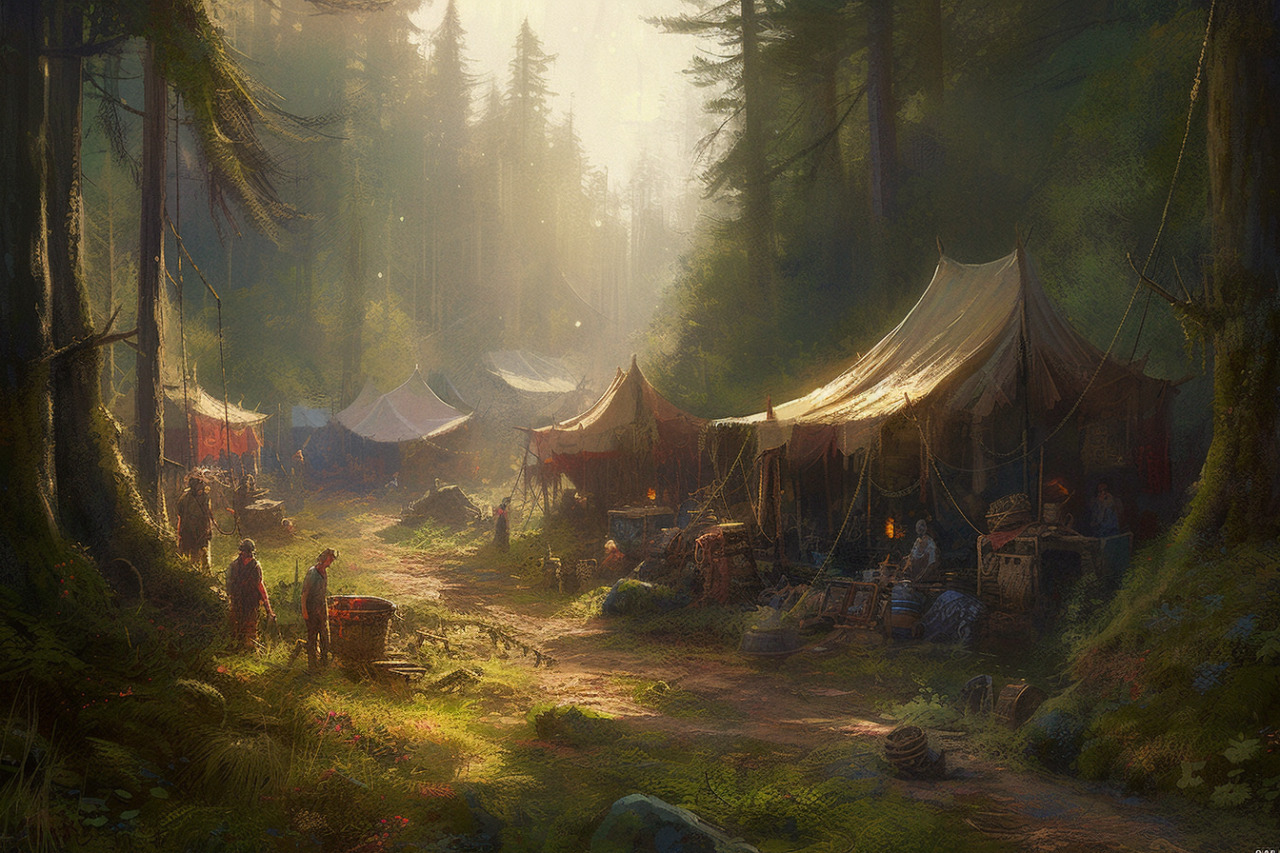
In some tribes, the Katharutno are seen as symbolism of the Moonmaiden, as light and goodness, while the Mothoves (Luminary) supposedly reflect the darkness of Shar, a harsh necessity in the balance of the universe; the ones who make difficult choices and bring forth violence in times of need - whether through themselves or by instilling it in others. This belief is at times reinforced by the fact that the Mothoves tend to be gifted and powerful bestowers of curses. To most, though, both are simply spiritual and martial leaders, respectively, and regardless of what the truth is, both leaders are known to be able to manipulate and channel marime without taking it on themselves, giving life to curses.
Beneath the two primary leaders there are countless different roles in any given tribe, dependent on the exact one, and both genders fill many such roles as a tribe sees fit, but most typically the women are witches, seers, foragers, and cooks, whilst men act as guardians, hunters, and leatherworkers.
Katharutno (Seer)
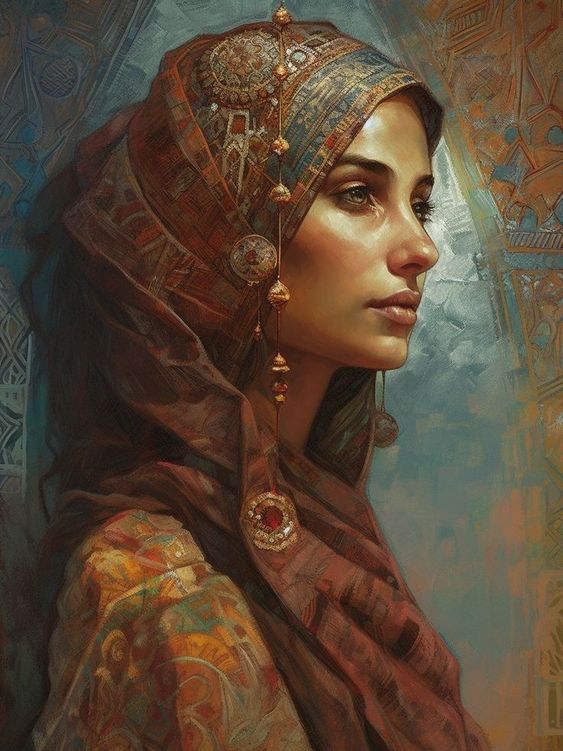
The Katharutno of a tribe, typically, is chosen not by singular tribulation or test, but rather they are agreed upon collectively by the whole tribe. Past experiences and success in life may of course influence the decisions of family members. The finer details of what makes for a great Katharutno, what qualifies a person to become such, is entirely dependent on the exact values and beliefs of a tribe, and subsequently that of individuals.
Only few of the Selûne’s Children are unusually gifted seers and oracles, finding true purpose and power as soothsayers, diviners, and shamans - they are most often the ones who become Katharutno, and those whose connection to the moon - to the Sight - proves lacking in comparison tend to act as apprentices, aides, and seconds of Katharutno known as Augurs. Some, of course, abandon their erstwhile calling entirely in the face of failure and devote themselves to other horizons - whether spiritually or physically so.
It is said that the word augur - relatively new - originates from the tongue of the Gur, and has wormed its way into many tongues, as well as Common. It translates to “Gur with sight”, roughly. The word Katharutno on the other hand is an ancient one loosely meaning “great moon’s chosen” or “great chosen seer”.
Mothoves (Luminary)
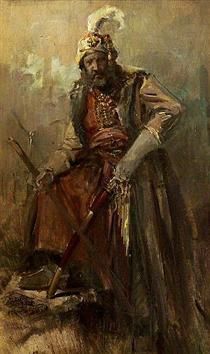
The Mothoves of a tribe, typically, are proficient with magic Gur curses. This is ascribed to their close proximity to the Katharutno and the hardships of a tribe that are their responsibility, commonly experiencing brushes with death and other situations that most would prefer to avoid in fear of marime. Mothoves, while leaders in their own right, ultimately defer to the Katharutno, for the Seers orient the Luminary, either firmly or delicately tempering their often bellicose and darker natures, whichever is most effective with individual Mothoves.
The Mothevna form the bulk of the Gur warrior caste, watching over their tribes with dutiful vigilance - one and all bound by profoundly instilled familial obligation. These warriors are easily recognisable by the distinct sight of their twin blades (meaning dual-wielded scimitars or two-bladed swords) - a common choice of weaponry among many a Gur tribe - as well as the veiling of their faces, though this is not practiced by all tribes. A tradition steeped in both pragmatism and superstition, they are forbidden from revealing one's features while on watch, nor in the company of outsiders, for twofold reasons; firstly, to ensure none can mark and thus eliminate protectors of the camp in the event of betrayal, and secondly, to avoid drawing marime upon oneself. The pragmatic side is rooted in an apparent outside betrayal of old, now remembered by few and varying wildly in nature according to who speaks of the cautionary tale, whilst the superstition comes from an old belief of warriors being most vulnerable to sources of marime, by the sheer nature of their vocation, and a covered face is said to combat many such manifestations.
The word Mothoves comes from a white, glowing moth - believed to be the source of the word moth in Common - that Gur consider to be the most sacred of the Moonmaiden’s creatures, seeing its rare appearance as a sign of great approval and blessing. Supposedly these moths are life sprung from the Tears of Selûne.
Marriage & Love
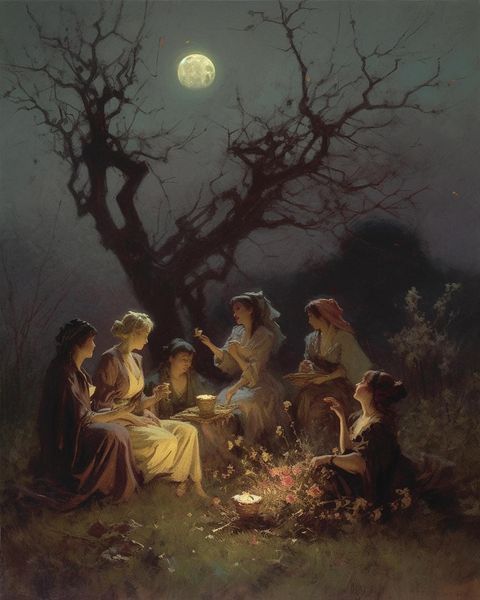
The vast majority of Gur rarely conceive - at least in comparison to other cultures - due to their high standards and particular society and customs, as well as the divided nature of their overall people. All of this contributes greatly as to why they remain a minority next to most ethnicities in the Realms.
It is unusual to be unmarried in Gur society - both genders are typically married upon seeing their eighteenth year and completing their Maladyilem. Divorce, of course, is impossible - marriage should take place only once and for life. Those women who still decide to divorce cast a curse not only on themselves, but also on their off-spring. Typically this is a woman’s daughters, and the same applies to men and their sons. Such a Gur has ill chances of ever marrying again.
Unsurprisingly, Gur purity demands that those intending to marry be virgins. Otherwise, great shame awaits. Having lost one’s purity before the wedding runs the risk of being lonesome forever - most Gur will never go against the laws of the camp and will not marry those who have had affairs.
Gur & Sar Mismeri (The Longest Year)

Many a tribe were caught in the harshness of winter, others in unfamiliar land and struggling to navigate back to their ancestral land, and some rare few even lost faith completely in the Moonmaiden. This gave rise to differing changes in select tribes - where the vast majority of Gur had previously shared nearly all culture and traditions - the already alienated Gur were now further divided. Whilst some Gur remain staunchly traditional, clinging to the old ways amidst notions of the Second Sorrow merely being a test of faith to endure, the most desperate or disillusioned of tribes changed their ways - whether in the name of survival or belief. The most extreme of these tribes are universally shunned by all other Gur.
Sar Andas (The First Sorrow)
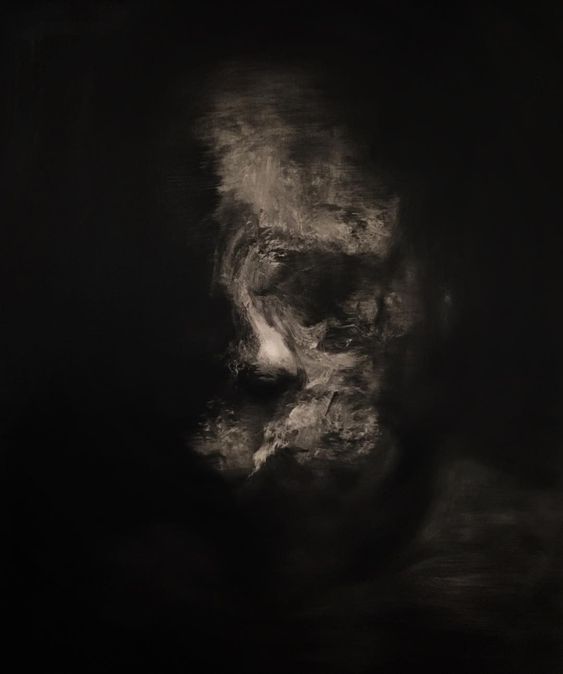
Nakhavno (Moon Madnesss)

The lunar madness gives life to Gur barbarians, whose physical prowess reaches its peak during various phases of the moon, dependent on the individual. They are one and all nonetheless known to enter a deadly frenzy under any moonlight, where friend and foe become nigh indistinguishable, though it it said some learn to control this lunar frenzy to an extent.
In spite of whatever control some Gur manage to wrestle from the moon, all living with Nakhavno must deal with the reality that they are not always themselves, and many suffer from other symptoms even after it has passed - namely more intense emotions (love, anger, joy, sorrow, etc.), and sensitivity to senses (smell, touch, taste) and light. The new moon, the phase where the moon is most dim, is where afflicted Gur feel their condition most keenly, and it is known to all that this moon madness has only worsened since Sar Andas (The Longest Year).
Gur folklore amongst some tribes pokes tendrils into superstitions and sayings that claim all Gur were once raw darkness and that Selûne guided them all those ago years to deliver them from darkness. These same Gur say that Sar Andas is that very same darkness manifest, intent on reclaiming them. There are equally many who oppose this belief and see it as heresy, as undeniable marime.
Nakhyarav (The Moon Sight)
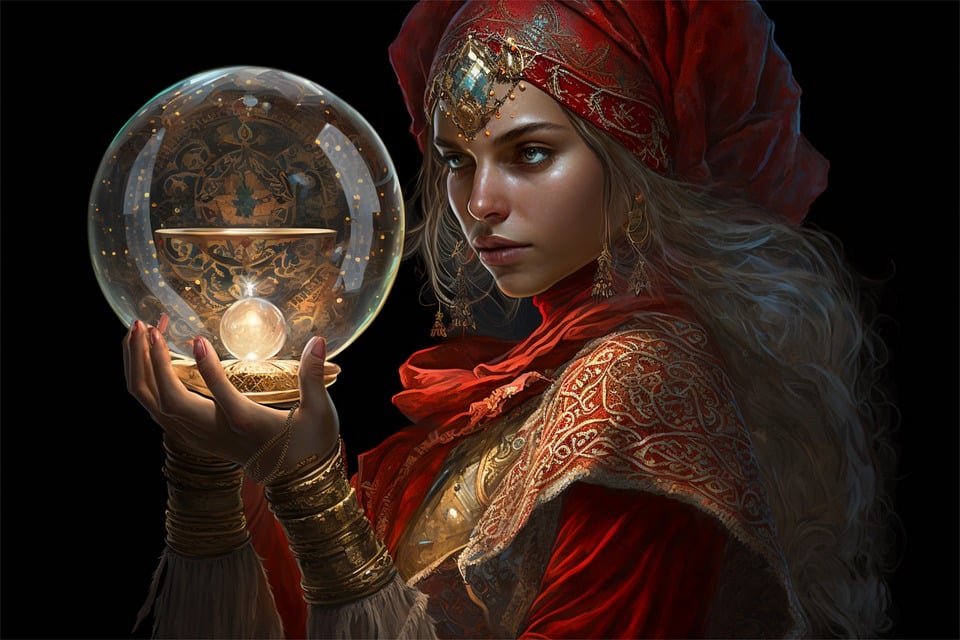
Only Gur spellcasters are capable of possessing the Sight, and most are said to be among the flock of the Moonmaiden.
NOTE: PCs in possession of the Sight are expected to keep any and all elements revolving around it grounded and subtle in tone and purpose. Dreams, visions, should be vague and unimportant, more of a burden than a gift; more of a detriment than a benefit, due to its highly unreliable, difficult to interpret, and overwhelming nature. Simply being Gur - even a class and concept befitting the Gift - doesn't make a PC an actual, proper soothsayer, the path of a true Augur or Seer is something only DM interaction can lead to, as RP surrounding visions inevitably is very much reliant on DMs.
Be warned that roleplay of the Gift - especially the more consistent and centric it is for a PC - may come with dangerous consequences via DMs.
Maladyilem (Coming of Age)
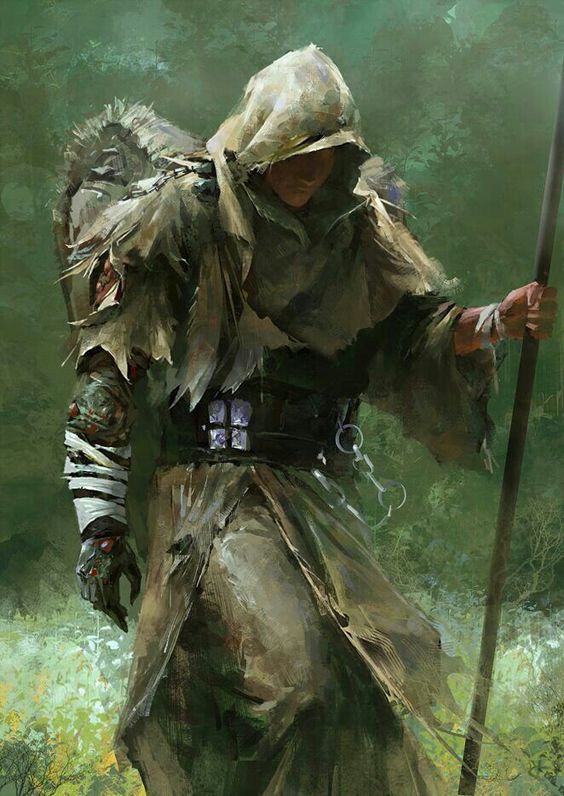
There are those, however, who take much longer than others to be chosen, and even those who are never called to the Maladyilem - unequivocally known as Losshav (the Forlorn). Typically looked down on and shunned, they are believed to be marime; supposedly abandoned by the Moonmaiden for their impurity, often ending up exiled from their tribe - especially if too many years pass as Losshav. The ones whose call to the journey comes belated are known as Shavarvani, loosely meaning “prodigal son / daughter”.
The purpose of the Maladyilem is first and foremost to instill knowledge of the land in fledgling Gur - which the astute and capable of youth pay heed to in their travels - so that they can find their way to their ancestral land on their own wits and ability, should they ever become lost or the need arise for them to lead or guide the tribe.
Growth follows closely after, for a Gur called to the Maladyilem must return wiser and knowledgeable, expected to impart new knowledge, songs, and stories unto the tribe in their homecoming. Those who succeed in their Maladyilem must stay in their tribe’s ancestral land until the tribe returns to it.
Vardo (Wagon)

Gur almost never allow gajo (outsiders) into their homes’ private living spaces. To do so is typically marime. Few exceptions do exist, such as a honourable outsider or ally’s life being at stake, or a gajo being so trusted that extremely sparing visits may be allowed. More often than not Gur opt for what is safe, and that is to permit gajo into the yards and fronts of their Vardo, but no further. They typically will also provide a gajo with a special seat reserved for outsiders if possible.
Vardo are typically shared between family, whilst leaders and otherwise particularly notable family members have their own. This makes one’s very own wagon a lofty goal and a sign of esteem and power. Some tribes exist however where each member possesses their own Vardo, owing to significant success and wealth on the part of the tribe.
Miscellaneous Traditions & Customs
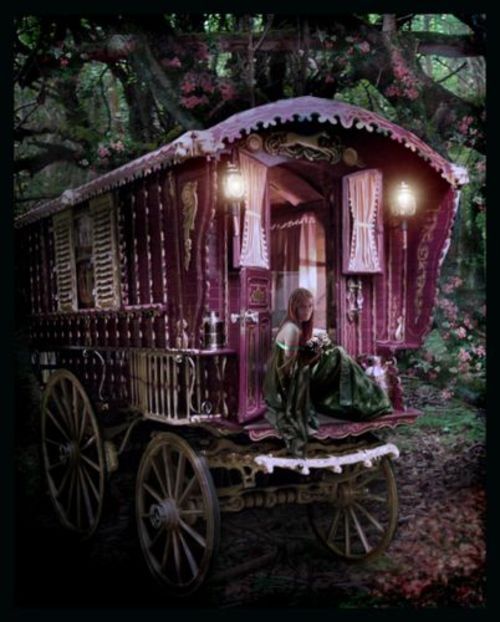
If Gur offer a gajo visitor food or drink, it will be in special cups or dishes, along with special utensils, reserved for outsiders. By keeping separate dishware, Gur avoid contaminating their belongings and themselves.
Gur value purity and cleanliness above all things. They keep their bodies pure by cleansing themselves constantly, washing their hands as much as possible before touching anything, they almost never share cups or utensils with each other and especially not with outsiders. They avoid stale waters, and only drink, wash their clothes, and themselves in clean running water, for when water keeps flowing it is cleaner and purer.
This nigh ritual and religious cleanliness has over the centuries given rise to rumours and infamy, branding many a Gur as witches and warlocks in the eyes of the many. When the Gur would travel to places afflicted by plagues or sickness, if people became sick, if bad things happened; the Gur often did not catch sickness because of their strict hygienic rules, and thus were more often than not perceived as the sources and creators of such things.
Though all Gur love rivers and would prefer to drink and generally make use only of flowing water, waterskins decorated ritually with owl feathers and blessed by Katharutno (Seers) is a commonly accepted compromise, particularly in times of need and hardship. These feathered waterskins would often be glimpsed by outsiders, and were consequently looked upon with harmful ignorance, such as assumptions of foul sorcery that would shield them from their supposed spells of disease.
Gur children, when born, are one and all immersed in moving waters such as rivers, in what is believed to be the first act and exposure of vujo in their lives. Superstition abounds over the reactions of newborns in this moment. Any thrashing about wildly or otherwise having an adverse reaction such as crying, would be seen as ill luck, whereas calm and collected newborn are said to be good fortune - in either case, the perceived luck or misfortune clings for a time unto the child’s parents in the eyes of the tribe, and some even avoid their presence until enough time has passed.
Unsurprisingly, any deities of disease, particularly Talona, are most hated to Gur. Spiritual cleanliness is of equal importance to Gur after all.
Relations with Other Races
The Gur, for the most part, have no particular predisposition toward other races, unless their specific tribe has history dictating otherwise. A common universal exception is the race of Moon Elves, who countless Gur feel a kinship with for evident reasons.
Some Gur are most curious of demihumans - particularly those that are a rarity in their tribe’s ancestral lands or usual travelling grounds, for they above all may offer the most obscure and unusual of Diminyatsa.
Language and Literacy
Speakers of an ancient dialect of Rashemi among themselves, Halardrim, the Gur employ the Thorass alphabet among those who can write, and typically speak Chondathan with outsiders, but this is dependent on the home region of the tribe. Due to the oral and social significance of their culture, it’s common for Gur to be illiterate.
Gur Deities & Common Classes
Selûne is the favoured and chosen of nearly all Gur, but it’s not unheard of for some Gur to commit themselves fully - as shamans, clerics, and other such devoted paths of life - to other gods and goddesses, but even so all of these Gur likewise venerate and pay lip service to Selûne in a way they don’t any others. As bardic practices and emphasis on the importance of knowledge are commonplace for the Gur, it is likewise normal to see them worship deities of knowledge, song, music, storytelling, etc.
Overall*, Bards (F), Clerics (F), Shamans (F), Druids (F), Fighters (M), Rangers (M), are among the most common of classes seen among the Gur, while Artificers and Palestone Knights are the rarest of all, due to neither being suited to Gur culture and society.
*The asterisk indicates the most common, traditional gender for the mentioned class, but this doesn’t mean the opposite gender can’t go for them, only that they may face discrimination and difficulty - or worse - from some tribes, even their own.
Known Gur Tribes
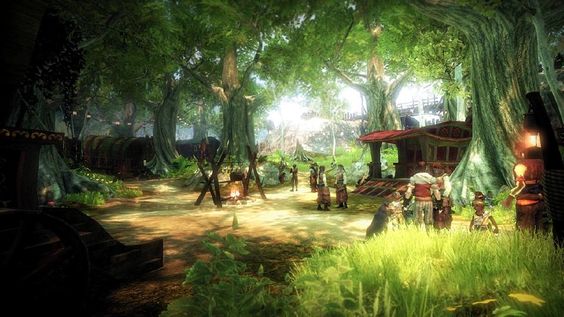
Each known tribe here will only detail the way in which they stand out as outliers, that which makes them unique. All traditions and customs of the rest of the page are abided by and maintained by every tribe unless explicitly stated to be otherwise.
The list of tribes is as follows:
The Lovari Tribe
The Lovari are the oldest Gur tribe to endure the toll of time and prejudice, notable primarily for their staunch belief and clinging unto of the old ways, remaining extremely traditional where others have strayed and doubted. To them, Sar Mismeri (the Longest Year) is the ultimate test of faith in the Moonmaiden, and of the resilience of their people. A particular custom of the tribe is that of the Sijan Lokhi (The Becoming); an esoteric, gruesome ritual where the most gifted of their Seers and Augurs choose to sacrifice one eye beneath the full moon, in the name of the Sight and betterment of the tribe, wherein their now empty eye socket is replaced with a gem or crystal believed to be blessed and potent enough to better channel the Sight, the immediate vicinity of flesh surrounding it marked with many a rune, said to temper and control this greater manifestation of the Sight, to steer one away from the precipice of insanity. Many of these Seers and Augurs have been know to succumb to madness in time all the same, plagued by nigh endless visions, ones supposedly even blending in with reality.
The Lovari folklore - ballads and oral annals of old - speak of a time less tamed, back when the Gur were undivided, and the pernicious weed of civilisation was less rampant upon the wild, beautiful face of the world. These stories and oral accounts of old claim that their ancestors first appeared in ancient lands of Amn, when it was known to them as Eshmiri (Moon's Embrace), in the cradle of which the Lovari supposedly sprung forth from a fallen Tear of Selûne. Believing themselves as the Moonmaiden's children indeed, many a Lovari are known for holding themselves in high esteem, for what passes as arrogance to outsiders. It is not uncommon for them to look down upon those Gur that they deem as lacking in both tradition and faith, often attempting to guide them aright in misguided ways, in what they see as benevolence.
The tribe is known to have a deep friendship with the township of Dausann in Amn, annually visiting and staying for months on end at the edges of it. A rugged frontier town, Dausann is nestled precariously by the eastern border of Southern Amn; in the wilderness between the Umar Hills and the Vale of Wailing Women, making it the most distant of civilisation in the Swordbelt. Its bold position exposes it to dangers of many kinds, but also provides the township with ample ways of sustaining itself in the untamed parts of the Swordbelt - yet to be cultivated by the people of Amn.
Many Amnians think the town’s isolation amongst the wilds a fool’s errand, one surely destined to end in carnage and a people forgotten, yet its inhabitants have defied nature and the dangers of the greater world for as long as the tribe’s oral history can remember. For this, it has thrived, able to retain its acknowledged existence as part of Southern Amn, and yet not as governed as every other settlement in the nation - a balance that Lovari know the township to favour, and one the Lovari likewise look favourably upon.
The Feast of the Moon, taking place between the final night of Uktar and the first day of Nightal, is the last great festival of the calendar year, one which the Lovari have always adhered to and celebrated with the utmost devotion. The day traditionally marks the onset of winter. It is also a time to celebrate and honour the ancestors and the respected dead. On this day, ordinary folk bless their ancestors' graves and perform the Ritual of Remembrance.
People also gather to tell stories of the deeds of their ancestors and of the gods until deep into the night, until they merge and become legend. This, for the Realms, is a time to hear of past heroes, great treasures, lost cities - of knowledge both known and obscure. For the Lovari, it is much the same, though for them the night of Moonfest begins with the Katharutno sharing a new story each time - from sorrowful tales to hopeful ones - and ends in a great bonfire in the middle of camp that old grudges, sorrows, and failures are tossed into in rune etched, wool parcels containing memorabilia connecting one’s mortal coil to such things.
Appearance wise, the Lovari most resemble Amnians, ordinarily having dark tones of hair, skin, and eyes alike, much like typical Gur.
Notable Members
Balana "Sees-in-Cerulean" - The Katharutno
The Seer of the tribe, Balana is a gentle and kind woman, often opting for lenience and forgiveness where the Mothoves is of the opposite mind. That's not to say she is naively foolish or weak, as she is known to make hard decisions when they are called for. She leads the tribe with great wisdom for one rather young, having assumed the mantle of the Katharutno in the wake of her mother passing away abruptly to a coastal plague, who relentlessly instilled in her all the expectations of a future Seer. Balana chose the Sijan Lokhi when merely an adolescent - the youngest of the tribe in their oral history - a sapphire adorning her left eye from youth to the present day.
Alafair "Veins-of-Obsidian" - The Mothoves
Like a harsh father figure to the rest of the tribe, Alafair believes in tough love in all things. No less respected for it, the Mothoves is capable and experienced, confidently leading the tribe alongside Balana to horizons new and old. His secondary name comes primarily from his hexes - the uttering and casting of which temporarily darken his veins - but also from the discovery of his gift for hexes, rumoured to have taken place in an abandoned mine.
Sabina "Beholden-of-Rivers" - Augur, First Apprentice of the Katharutno
The favoured of the Seer, Sabina is widely believed and supported to be the next Seer, though that promises to be far in the future due to Balana's youth. Sabina is a quiet and calculating woman, preferring the company of animals and rivers to that of other living beings and crowds, which is partially how she came to take on her secondary name. A talented druid, she has a penchant for water magic - she claims that running water, particularly rivers, calms the worst of her visions.
Danior "Wanders-with-Wind" - Mothevna, First Apprentice of the Mothoves
A man blessed and cursed with wanderlust, Danior is the most gifted scout of the tribe, known to wander off for days at a time, sometimes to the chagrin of the Mothoves. The roots of his secondary name are in this and the calling of wind that he claims to hear, supposedly telling him of those in need. Some think him mad for it, others call it the whisperings of the Moonmaiden. Nonetheless a man very much interested in company and one with great love for his tribe, he often accompanies others on hunting expeditions, leisurely walks, or simply drags others off to the unknown wilds to whatever end.
TBD

